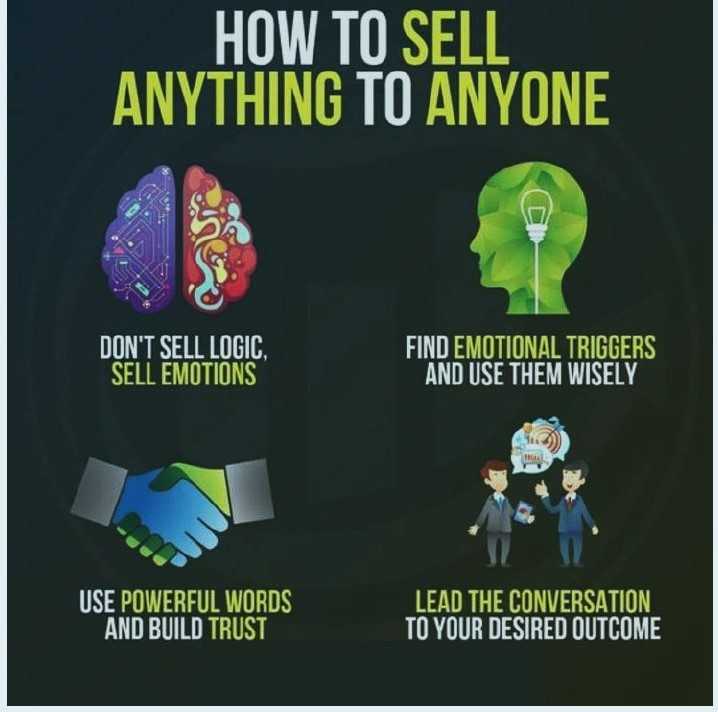We do our research on various topics in the world and then we share it with our viewers. Today, the topic is all about How To Make Money on Shopify Drop-Shipping.
Today, we are going to talk about How to Make Money on Shopify Drop-Shipping.
Introduction:
Today, drop-shipping business through Shopify has been seen as the best way of starting an e-commerce business with little capital. It is a business model where you can sell goods over the counter through direct suppliers and customers without being subjected to having the merchandise stock. What makes people embrace this form of business is that it is easy to set up and people engage in it with little or no risk of losing their money. Here, we will describe (step by step) everything you need to know about drop-shipping on Shopify and how to turn your business into a high revenue-generating store.
What is Shopify Drop-shipping?

Understanding Drop-shipping:
Drop-shipping, as the name suggests, is a retail strategy that involves ordering products from a supplier and having them shipped directly to the customers. However, in drop shipping the store doesn’t purchase the items, when a customer makes an order, the store sources the item from a third-party supplier and the supplier delivers it directly to the customer. Thus, the merchant never comes into direct physical contact with the product. Further, it has minimal demands for the actual capital in the beginning, and hence newcomers can easily start the business.
Why To Choose Shopify for Drop-shipping?
Shopify is a bestselling solution for any Web entrepreneur who wants to get their brand established instantly. It has various features made for drop-shipping, as well as the ability to work with the main apps like Oberlo and Sprocket. Hence, anyone looking to begin a drop-shipping business will find Shopify easy to manage, backed with good support, and packed with apps.
Creating Your Shopify Store:
Choosing a Niche:
This leads to the choice of which niche to bring into your products to be crucial to the success of your Drop shipping business. A niche market can be defined as a selected segment in the market to which one directs his/ her products/ services.
Passion and Interest: Choose a specialty that you love to work with or one that you will have an interest in since this will help you to work harder.
- Market Demand: Conduct market research to identify the need for the selected niche. For instance, one can use Google Trends, The Keyword Planner, and social media networking sites to gain interest.
- Competition: You have to look into your competition within your area of focus. It is good to have competition but do not go over the top by entering into industries that are over-saturated.
- Profit Margins: Make sure the products you are operating, especially those in your focused niche, have realistic and sustainable profit margins. This will make it possible for you to break even although you will also pocket some cash.
Creating a Shopify Account:
To get started, you’ll need to create a Shopify account:
- Sign Up: Upon the completion of your research, visit the Shopify website and create an account for yourself using the free trial. The information that is going to be required from you is an email address, password, and store name.
- Store Setup: Go through the instructions to create your store. Depending on the package you choose, you will be required to fill in your business details like your business address among others.
- Select a Plan: Select one of the Shopify plans that you can afford, and which maintains your business type. The Basic Shopify plan would be suitable from the ground up as a first plan for many drop shippers.
Designing Your Store:
The store design matters a lot in the overall process of enticing and converting consumers to your business. Here are some tips for designing an appealing and user-friendly Shopify store:
- Choose a Theme: Shopify has a free theme level and a paid premium theme level. Pick a theme for your site that elicits the right vibe for your brand and one that is most likely to generate conversions.
- Customize Your Theme: This is especially important for your chosen theme which you will then further modify to fit your brand image. You can add the Company logo, select the color of your choice, and set the homepage for your Avatar.
- Optimize for Mobile: Make sure you have a mobile version of your store since customers use their handheld devices to make purchases.
- Easy Navigation: Explain the steps by which customers can quickly locate products; design a basic easy-to-navigate top heading.
- High-Quality Images: Make sure you use high-quality images of your products and high-quality banners. Appearance can matter a lot, especially as far as the rates of conversion are concerned.
Adding Products:
- Find Suppliers: Some of the apps you can use are Oberloh, Sprocket, or AliExpress to get the right suppliers for your products. These apps enable you to easily transfer merchandise into your Shopify store.
- Import Products: Navigate through the application in a search for suitable products. Acquire them into your store with the simple click of a button.
- Product Descriptions: Convey clearly what the product is about and all the good things you need the customer to know about each product. They will also need to adhere to an outline that is easily opened and separated by bullet points.
- Pricing: The last of the strategic management decisions is to ensure that you offer your products at a fairly low price depending on your competitors. This calls for understanding the cost price of the products, the cost of freight, and the target profit percentage.
- Product Images: Make sure that every product has more than one good photo taken from various angles.
Marketing Your Shopify Store:
Search Engine Optimization (SEO):
SEO is crucial in helping you bring organic traffic to your Shopify store. Here are some key SEO practices:
- Keyword Research: In this case, one has to learn about keywords for the niche in question using Google Keyword Planner, Ahrefs, or SEMrush.
- On-Page SEO: Simply, optimize the various aspects of product title, description, and meta tags with proper and suitable key phrases. Make sure URLs are Search Engine Friendly or SEF as they are commonly referred to.
- Content Marketing: Design your materials in the form of blog articles, guides, and others in a way that will be useful to your audience. It can also be quite useful in increasing the amount of organic traffic to your site and, as a result, enhancing your search engine ranking.
- Backlinks: Ensure that your store gets quality backlinks from other relevant sites to increase its ranking on search engine results.
Social Media Marketing:
Account of social media shows it is useful to help your drop-shipping business.
Choose the Right Platforms: Concentrate on those sites that your target population is most likely to frequent. Some of the most used channels for e-commerce are Instagram, Facebook, and Pinterest.
- Content Strategy: The promotion posts should be a third of the content while the rest of the content should be made up of user-generated and educative posts.
- Engage with Followers: Most importantly, reply to the comments and messages to the post as soon as possible. Interacting with the audience helps create trust and also converts them into brand advocates.
- Influencer Marketing: Collaborate with influencers within your target market so that they present your products to their audience. Everyone knows that influencers can help to reach more people, and the audience will be more active.
- Paid Advertising: It is equally possible to target potential customers by running ads on the commonly used social media platforms. Some of the common tools people use to promote their campaign include Facebook Ads Manager.
Email Marketing:
Email shall be used to follow up on the leads with a view to converting them into customers. Here are some tips for building a successful email marketing strategy:
- Build an Email List: Many visitors fill up online forms or willingly offer their email addresses when required on your website.
- Segment Your List: You should split your customers’ database by their actions and preferences. This makes it possible to dispatch perfect mails that are in line with the audiences ‘needs.
- Automated Campaigns: Implement emails for first-order congratulations, cart abandonment alarms, and follow-up emails after the purchase.
- Compelling Content: Format the emails in such a way that they can present the product details in employment, special offers, and important information.
- Track Performance: To see the performance of your campaigns and improve them, utilize tools like Mailchimp or Klaviyo.
Managing Your Shopify Store:
Order Fulfillment:
If the orders are not effectively delivered in a timely and efficient manner it is almost impossible to satisfy the customers. Here’s how to manage the fulfillment process:
- Automated Fulfillment: Make use of drop shipping applications that help in the order processing. Some of the features that should be incorporated in the app include; When a customer places an order the application shall forward the order to the supplier for processing.
- Tracking and Notifications: Always update the clients regarding the progress of their orders. Of course, that can be combined with tracking information and updates derived from the parent website and forwarded to the recipient’s email address.
- Customer Service: Ensure the company delivers the best customer service by addressing the clients’ questions and complaints efficiently. The support services should be channeled through a helpdesk tool, including Zendesk.
Inventory Management:
While you don’t hold inventory in drop-shipping, it’s essential to keep track of your suppliers’ stock levels:
- Stock Alerts: In the same manner, use automatic notifications to be informed when the stock of a specific product is low or completely depleted.
- Regular Communication: While ordering the products, check with your suppliers frequently to know the current status and availability of the inventories, and if there are likely to be any bottlenecks.
- Product Alternatives: This implies that one should always ensure they have other related products in place in case one product gets off the market.
Analyzing Performance:
The performance analysis also assists you in one way or the other especially when it comes to dealing with your store. Here’s what to monitor:
- Sales Metrics: Monitor your sales, revenues, and profit margins. For more detail, you can use the built-in analytics of the Shopify application.
- Traffic Sources: Monitor your traffic source because this will help you understand the location of your visitors. Any targeted marketing should be on the platforms that are likely to deliver the highest volumes of traffic or transactions.
- Customer Behavior: Other sources of learning include the use of web analytics such as Google Analytics to understand consumer behavior on your website. Check the pages that are anathema to low bounce rates and then try to improve the input worth of such pages.
- A/B Testing: Opt for the A/B testing method, which allows you to implement improvements and investigate elements of your store, for instance, pages dedicated to products, prices, and marketing initiatives. Such results can then be used to make the necessary changes incorporating the aspect of data analytics.
How to Properly Scale Your Shopify Drop-Shipping Company:
Expanding Product Range:
As your business grows, consider expanding your product range to attract more customers and increase sales:
- Product Research: Cut down the time taken in developing new products by conducting a constant search for products that suit specialty and customers’ tastes.
- Supplier Relationships: Purchasing should develop a good rapport with the suppliers so that you can be provided with products that are not common in the market and probably lower prices.
- Product Bundles: Offer related products and cross-sell to the customer to boost the average order value.
International Expansion:
Expanding your business internationally can open up new revenue streams:
- Market Research: Carry out market research to determine the areas of the world where there is demand for your goods.
- Localized Content: Use translations for your products with local markets as well as regional promotions.
- Shipping and Logistics: The company should seek relations with suppliers or logistics providers that can be able to deliver at the international level.
Automation and Outsourcing:
Automation and outsourcing can help you scale your business more efficiently:
- Automated Tools: Automate processes in areas that you do not require the human touch such as email marketing, order processing, and customer service.
- Outsource Tasks: Delegated work that does not need to be done in-house such as graphic design, content creation, and social media management to freelancers, and agencies.
- Virtual Assistants: Pay for virtual assistant services and delegate mundane tasks so that you can better focus on developing your business.
Building a Brand:
Building a strong brand is essential for long-term success in drop-shipping:
- Brand Identity: Build and define your branding components which entail your logo, colors, and the tone of your brand.
- Consistent Branding: Make it a point that your branding on the web-based platform is in harmony with your branding on your webpage, your profiles on various Social Media platforms, and your packaging.
- Customer Loyalty: Develop and maintain a customer base because a loyal customer is the one who will always choose your business because of the kind of service you offered him/her during his /her visit.
Overcoming Challenges in Drop-shipping:
Dealing with Competition:
This is one of the competitors’ issues that relate to drop-shipping. Here’s how to stand out:
- Unique Selling Proposition (USP): Define and advertise the unique selling point of the services you offer. Who or what makes your store unique?
- Customer Experience: Ensure that the website is user-friendly; the product is shipped promptly, and the clients are promptly attended to in case of any inquiries.
- Exclusive Products: Seek products that can only be obtained from you or through adopting exclusive customizations with other drop shippers.
Managing Supplier Relationships:
Reliable suppliers are crucial for the success of your drop-shipping business:
- Due Diligence: Be very selective with suppliers as this is a crucial area in the supply chain. Ensure you do your homework and work with suppliers that have a good reputation from their past clients.
- Clear Communication: Communicate frequently with your suppliers with no hidden information from either of you. Create rules regarding the required time for the processing of the orders and the quality of the services or products, which are expected to be delivered.
- Backup Suppliers: Source the same product from different suppliers in case your main supplier fails to produce or deliver the products on time.
Handling Returns and Refunds:
It is very important to understand that returns and refunds are an implicit feature of essentially all online stores. Here’s how to manage them effectively:
- Clear Policy: Understand and set a fair return and refund policy that would be easily understandable to the customers. Ensure that customers can quickly and easily comprehend the course direction.
- Efficient Process: As a result, it is recommended to simplify the procedure of returns as much as possible to avoid negative consequences for the customer. It is vitally important to implement return management tools to deal with the requests successfully.
- Supplier Coordination: In engagement with your suppliers have a Social contract on how the returns and refunds will be managed. Make sure that your suppliers take cognizance of your return policy.
Conclusion:
Business people can make money on the internet by starting drop shipping businesses on Shopify since it brings about scalability. With guidance from the procedures provided in this guide, one is capable of creating a Shopify business, acquiring customers, and expanding his or her business. Select a good niche, design a good & user-friendly store, and find ways and means to market it properly.
Once you are through some of the above steps, you can add more products to your line, devise new ways of getting into foreign markets, and even delegate some of the regions that would help you grow your business. Shopify drop-shipping is an opportunity to achieve success and income in case to devote time and find proper approaches.
This guide outlines the overall guide and basic steps to follow and master the Shopify drop-shipping business. When applied in running the online business, the following practices lead to the development of a profitable and sustainable business. All the best to you on your drop shipping experience!
So, that was the end of our today’s article about How To Make Money On Shopify Drop-Shipping.
So, that was our article about How To Make Money On Shopify Drop-Shipping. I hope you will like it and also leave your comment in the comment section for any of your question.
Tags:


